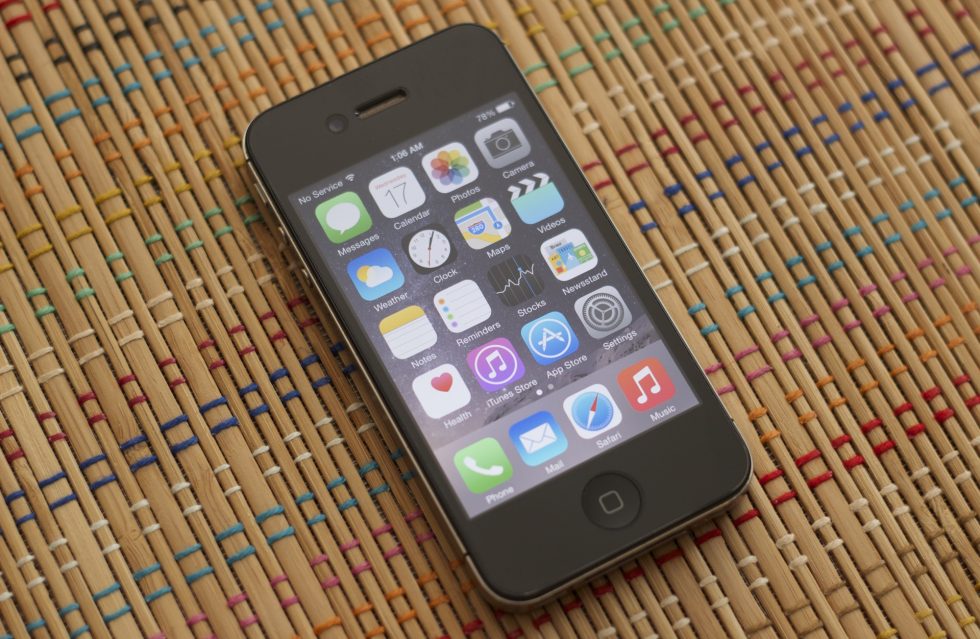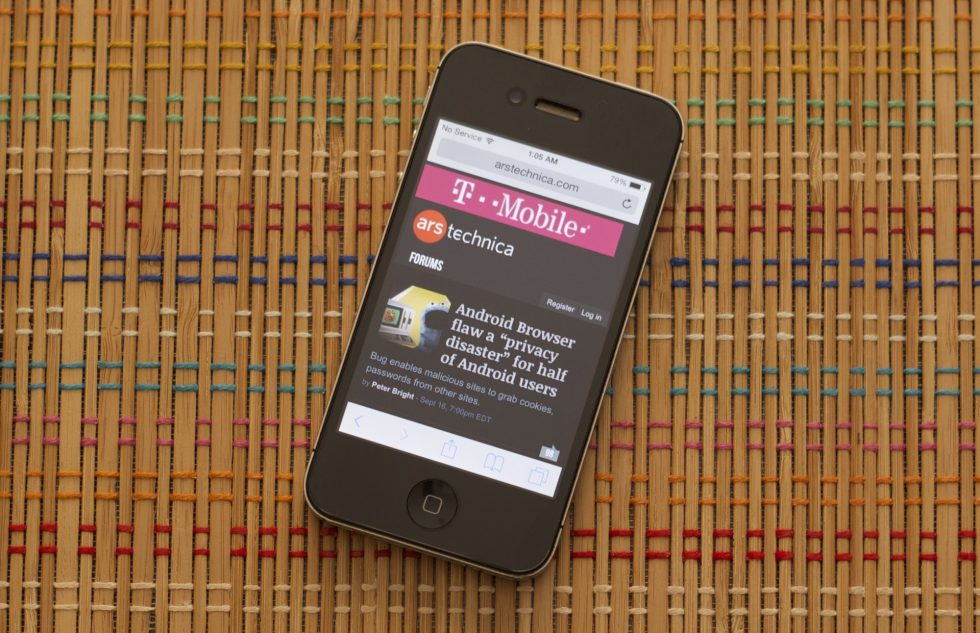
iPhones have about a year to be top-of-the-line. Then they have a year to be the modest-but-capable midrange model. After that, they become the free-with-contract choice. And then, in their last year, they enter that no-man's-land where they're still getting software updates but are no longer being sold.
2014 is the year the iPhone 4S was told to pack up its things and move to the retirement home. As a going away present, Apple gave it iOS 8, which in all likelihood will be the last major version upgrade it gets.
For the last two years, we've taken the oldest phone supported by each new iOS update and looked at what you stand to gain (and lose) by installing the update. We were impressed by iOS 6 on the iPhone 3GS, but iOS 7 on the iPhone 4 came with some serious compromises. The 4S has stayed pretty speedy over the years, but how does iOS 8 treat it?
Missing features
The iPhone 4S gets many of iOS 8's biggest additions, including support for extensions and most of the improvements to Apple's built-in applications. That said, it's missing out on several features that depend on newer hardware:
- AirDrop
- TouchID
- Handoff for applications, though iPhone call forwarding to other devices works fine
- Support for OpenGL ES 3.0, the Metal graphics API, and 64-bit ARMv8 apps
In addition to that list, keep in mind that the iPhone 4S is much slower than any other iPhone Apple currently sells. It uses 2.4GHz-only 802.11n Wi-Fi, lacks LTE, and uses an Apple A5 chip that only offers about a quarter the raw performance of the Apple A7 in the iPhone 5S (the A8 in the iPhone 6 and 6 Plus widens this gap yet further). iOS 8 doesn't leave the iPhone 4S behind, but you'll pick up quite a few features by moving to something newer.
3.5 inches is not that many
-
Spotlight suggestions can fit one or two results at best.Andrew Cunningham
-
Lots of extra onscreen elements to deal with while typing mail.Andrew Cunningham
-
And the same goes for sorting mail.Andrew Cunningham
-
The Notification Center can fit in a widget or two at best before scrolling starts.Andrew Cunningham
-
One fewer app row than an iPhone 5, two fewer than an iPhone 6.Andrew Cunningham
-
Screens throughout iOS 8 are generally busier than in iOS 7.Andrew Cunningham
Look at the Mail app, for example: you give up one strip of horizontal screen space to fit the typing suggestions and another strip at the top to show that Mail compose "windows" can be minimized to let you dig through the rest of your inbox. Both features work on the iPhone 4S, but they also leave you with only a very small bit of screen for what you're writing.
If you don't mind (or actively prefer) your 4S' screen size, by all means, continue to enjoy it. You'll just have to do more scrolling than you do on and iPhone 5 or an iPhone 6.
Needs more speed
We want to open this section by saying that iOS 8 on the iPhone 4S is nowhere near as bad as iOS 7 on the iPhone 4. That OS ran so slowly and looked so different on the iPhone 4 than it did on any other device that it was obvious the hardware was struggling to keep up.
The iPhone 4S made the jump to iOS 7 relatively gracefully, though, and it's fine with rendering all of the fancy transparency and translucency effects. We were expecting speed to stay roughly the same in the jump from iOS 7 to iOS 8, more or less as it did when we moved from iOS 5 to iOS 6 on the 3GS. Testing some application launch times under both operating systems reset those expectations.
| Application | iOS 7.1.2 | iOS 8.0 GM |
|---|---|---|
| Safari | 1.25 seconds | 2.16 seconds |
| Camera | 1.5 seconds | 1.8 seconds |
| Settings | 0.95 seconds | 1.25 seconds |
| 0.91 seconds | 1.30 seconds | |
| Messages | 1.73 seconds | 1.83 seconds |
| Calendar | 0.8 seconds | 1.25 seconds |
| Cold boot | 36.4 seconds | 39.8 seconds |
Each app was launched, timed with a stopwatch until it was ready for user input, then force-closed and opened again two more times; the speeds above are averages of those times. Again, we're not looking at an iPhone 4-level situation here, but iOS 8 can add as much as 50 percent more time to the same task compared to iOS 7. As you can read in our main iOS 8 review, browser benchmarks are a little bit faster and battery life is about the same, but speed does take a hit.
The other problem is something that's not so easily measurable: animations on the Apple A5 SoC are markedly more choppy and inconsistent in iOS 8 than they ever were in iOS 7, something we confirmed by jumping back and forth between OSes a couple of times to make sure we weren't imagining things. Ars Culture Editor Casey Johnston confirmed that she was seeing the same kind of behavior on her iPad 2, and the non-Retina iPad Mini I have for testing was also choppy. It's odd, because although the applications themselves have added features, the GPU shouldn't really be working harder to render stuff in iOS 8 than it had to in iOS 7.
The most common problem is dropped frames during animations, which doesn't create slowness so much as it gives the impression of slowness. You'll see these whether you're looking at big sweeping animations (opening a new tab in Safari) or smaller, more subtle ones (hitting "send" on a text in Messages). Occasionally, though, a hitch in animation would actually slow the whole device down, and it would sometimes hesitate to respond to input in a way that it didn't before. The iPhone 4's severe performance problems were addressed to some degree by the iOS 7.1 update, and we're hoping to see the same done for older devices under iOS 8.
Should you upgrade?

Despite the problems we ran into, we think the answer for most people will still be "yes." And if you happen to be using an iPhone 5 or iPhone 5C, the next-newest iOS 8 devices, go ahead and upgrade without fear; we didn't notice any of the same speed problems on those phones that we did on the 4S.
iOS 8 is a big update, and it comes with a lot of big features. Although the iPhone 4S misses out on Handoff, it can still run extensions like widgets and third-party keyboards, two things iOS users have been awaiting for a long time now. By holding off on iOS 7, you were mostly just missing out on a redesign, but with iOS 8 there's good stuff here that you're going to want if you can get it. Ideally you wouldn't have to trade features for performance, but in our opinion getting the new stuff is worth putting up with the small slowdowns you'll experience.
If you'd prefer to play it safe and wait for a future 8.0.1 or 8.1 update to improve performance on older devices, that's fine too—we hope that Apple makes it a priority as it continues to work on iOS 8.
reader comments
197